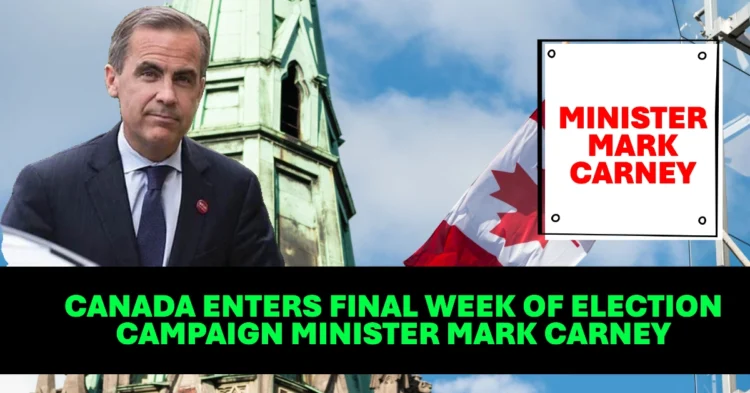On April 21, 2025, in Charlottetown, Prince Edward Island, Canadian Prime Minister Mark Carney renewed his calls for voters to give him a solid mandate in the upcoming April 28 election. With polls indicating he is leading, Carney emphasized the urgency of securing a robust mandate to tackle the escalating tariff threats posed by U.S. President Donald Trump.
In a campaign event, Carney framed the looming tariff situation as a critical challenge for Canada. He warned that President Trump’s trade policies, including the threat of annexation, represent a significant risk to Canada’s economic stability. As a result, Carney advocated for a strategic shift in Canada’s economic policies, focusing on reducing the country’s dependency on the United States and restructuring the economy to safeguard national interests.
Table of Contents
The Importance of a Strong Government Mandate
Carney, who has no prior political experience but has gained significant attention since becoming the Liberal leader earlier this year, stressed the need for a government that possesses both a clear and strong mandate to effectively navigate the current geopolitical climate. At 60 years old, the former central banker projected himself as a leader capable of managing crises and negotiating successfully on Canada’s behalf.
“We need a government that has a strong mandate, a clear mandate. We need a government that has a plan that meets the moment,” Carney declared. This statement reflects his belief that only through strong political backing can Canada effectively confront external pressures, particularly those stemming from U.S. trade policies.
The Liberal Platform: Ambitious Spending Plans and Budget Projections
Carney’s Liberal platform has proposed significant fiscal spending, with plans to invest approximately C$130 billion over the next four years. While this move aims to stimulate the economy and address key national issues, the platform predicts that Canada’s budget deficit for the 2025/26 fiscal year will reach C$62.3 billion — a significant increase compared to the C$42.2 billion deficit forecasted in December.
Carney’s approach reflects his broader vision for Canada’s economy, which includes major investments in infrastructure, healthcare, and social services. These measures are designed to ensure that Canada remains competitive on the global stage, particularly in the face of rising trade uncertainties and the shifting economic landscape.
A Shifting Political Landscape: Polls Show Tightening Race
As the election draws near, the political landscape in Canada has evolved. At the start of the year, the Conservative opposition led by a margin of 20 points, but recent polling data has shown the Liberals now holding a commanding lead. A rolling three-day Nanos poll released on April 21 indicated the Liberals are now at 43.7% public support, compared to 36.3% for the Conservatives. The left-wing New Democrats trailed with 10.7% of the vote, highlighting the intense competition for center-left voters.
Should these poll numbers hold, the Liberals would secure a majority of the 343 seats in Canada’s House of Commons, positioning Carney’s government to implement its ambitious plans.
Voter Turnout: Early Signs of Increased Engagement
Early voter turnout for the election has been encouraging, with a record 2 million Canadians casting their ballots on the first day of advance voting, which coincided with a national holiday. With 28 million Canadians eligible to vote, early participation signals a potential increase in overall voter engagement compared to previous elections.
Historically, voter turnout in Canadian federal elections has fluctuated between 70% and 80%, but in recent years, it has seen a gradual decline. In the 2021 election, only 62.3% of eligible voters participated. Experts, including Ipsos Public Affairs CEO Darrell Bricker, caution that while the high advance voting numbers are promising, it remains too early to predict whether this trend will translate into a higher overall turnout.
Canadian Dollar Slips Lower Against the U.S. Dollar
Canadians to Receive $1,433 CPP Payment on April 28, 2025 Who’s Eligible and What to Know
What’s Next for the Election?
As election day approaches, all eyes are on the race between Carney’s Liberals and the Conservatives. With mounting pressure from U.S. trade policies, a growing deficit, and rising voter interest, Carney’s ability to secure a clear mandate will be pivotal in shaping Canada’s political and economic future.
Will Carney’s leadership and plans for economic restructuring be enough to convince voters that he is the right leader for the times? Only time will tell as Canada heads into one of the most consequential elections in recent history.
Conclusion
The 2025 Canadian federal election is shaping up to be a pivotal moment for the country, with Mark Carney positioning himself as a leader who can guide Canada through turbulent economic waters. His calls for a strong mandate and a restructured economy are resonating with voters, especially as trade tensions with the U.S. escalate. As election day approaches, all eyes will be on voter turnout and whether the Liberals can maintain their lead or whether the Conservatives can stage a comeback. The stakes have never been higher for Canada’s political and economic future.

